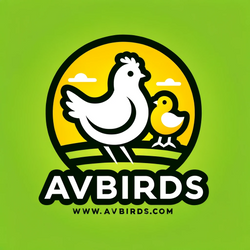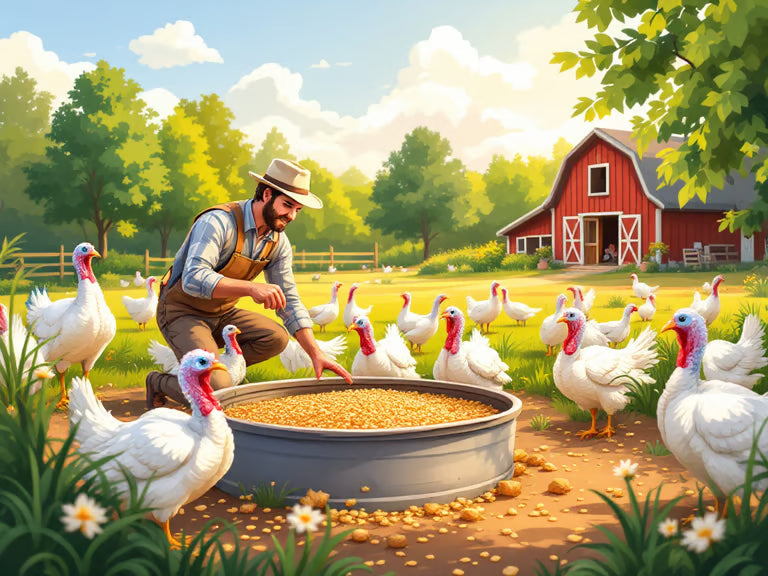When you’re planning to raise a Thanksgiving turkey in California, you want a solid live turkey feeding guide to keep your bird in top shape. Ever wondered what to feed your turkey at each stage? This guide walks you through the protein levels, portion sizes, and must-have extras like water and grit so your turkey thrives from day one all the way to Thanksgiving dinner. Along the way, you’ll find tips on adult diets, feeding schedules, and common issues, plus handy advice on raising live turkeys for Thanksgiving.
Start With Poults Starter
When you get day-old poults, they thrive on a nutrient-dense starter feed. Offer medicated game bird or poultry starter mash with about 28% protein for the first 10 weeks of life. This high-protein blend supports rapid muscle growth and immunity.
Protein Requirements
- 0–10 weeks: 28% protein starter feed (The Tiny Life)
- Change to 20% protein grower feed around 10 weeks
Sourcing Quality Poults
To kick things off, choose poults from a trusted hatchery or local farm. You can also explore avbirds.com’s tips on turkey poults and hatching eggs (avbirds.com turkey poults and hatching eggs).
Manage Feed Transitions
Around 10 weeks old, your turkey shifts from starter to grower feed. This transition helps keep growth steady and prevents digestive upsets.
| Age Range | Feed Type | Protein Percentage |
|---|---|---|
| 0–10 weeks | Starter Mash | 28% |
| 10–20 weeks | Grower Pellets | 20% |
| 20+ weeks | Lay/Maintenance | 16–18% |
Data based on turkey feeding benchmarks from The Tiny Life (The Tiny Life). Breeds vary in growth rates, so check recommended feed ratios for your live turkey breeds for Thanksgiving.
Supply Adult Turkey Diet
Once your turkey hits about 20 weeks, switch to a maintenance feed or lay pellets with 16–18% protein. This diet supports either egg production or general health. To boost natural foraging, let your bird graze on pasture and fresh greens during the day.
- Offer oyster shell or crushed limestone free-choice for calcium
- Provide chopped leafy greens or kitchen scraps in moderation
- Rotate feed sources to prevent nutrient gaps
For more on keeping adult birds content, see our live turkey care for Thanksgiving.
Provide Water And Grit
Water and grit are as important as feed when it comes to digestion and growth.
Water Needs
Turkeys drink about twice as much water as they eat each day. Adult toms may sip up to 2.5 cups daily, while hens average 1.5 cups (The Tiny Life). Keep waterers clean and hanging to prevent chilling and wet bedding.
Grit Importance
Grit helps the gizzard break down grain. Start offering fine grit at 1–2 weeks old, then double the rate every 4–6 weeks (The Poultry Site). Use crushed granite or oyster shell for best results. For health check tips, swing by live turkey health tips for Thanksgiving.
Set Feeding Schedule
A consistent routine keeps your turkey well-fed and prevents wasted feed.
- Weeks 0–10: Free-feed starter mash
- Weeks 10–20: Offer grower pellets in a trough, refill once a day
- 20+ weeks: Feed morning and evening, allow daytime grazing
Store feed in a cool, dry spot to preserve freshness. This simple plan helps you track consumption and adjust portions as needed.
Monitor Turkey Intake
Keeping an eye on your bird’s growth and droppings helps you catch issues early.
- Weigh your turkey every week to track steady gains
- Check droppings for consistency; loose stools mean too much protein
- Watch for silent pickers (birds that peck at others) which can signal nutritional stress
Early adjustments can prevent costly setbacks or health problems, so stay vigilant.
Review Key Takeaways
- Start with a 28% protein starter mash for poults up to 10 weeks
- Transition to 20% grower feed until about 20 weeks
- Switch adult birds to 16–18% maintenance or lay pellets
- Provide fresh water and free-choice grit throughout life
- Stick to a simple feeding schedule and monitor growth
Try adjusting your feeding routine today and see how your turkey flourishes. When the big day arrives, you’ll be ready to cook with confidence, so don’t forget to check our live turkey roasting techniques. Have questions or your own tips? It’s your turn to share below so everyone can benefit.

